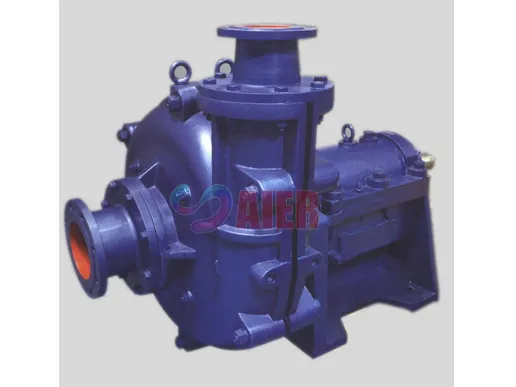Sep . 01, 2024 04:12 Back to list
slurry pump mechanical seal
Understanding Slurry Pump Mechanical Seals
Slurry pumps are widely used in various industries to transport abrasive and viscous mixtures, commonly known as slurries. These pumps are pivotal in sectors such as mining, mineral processing, wastewater management, and construction. One critical component that ensures the efficiency and reliability of slurry pumps is the mechanical seal. This article delves into the purpose, types, and maintenance of mechanical seals in slurry pumps.
The Purpose of Mechanical Seals
Mechanical seals are designed to prevent the leakage of slurry between the rotating shaft of the pump and the stationary pump housing. Given that slurries often contain solid particles that can be abrasive, the seals play a crucial role in maintaining the integrity of the pump system. By providing a barrier, these seals not only keep the slurry contained but also minimize the entry of contaminants that could damage the pump internals. Furthermore, effective sealing reduces maintenance costs and downtime, contributing to the pump's overall efficiency.
Types of Mechanical Seals
Slurry pump mechanical seals come in various designs, with the most common types being single, double, and cartridge seals.
1. Single Mechanical Seals Single seals consist of a rotating face and a stationary face, typically made from materials resistant to wear and corrosion. These seals are effective in low-pressure applications and are often found in standard slurry pumping operations.
2. Double Mechanical Seals Double seals are employed in more critical applications where the risk of leakage could pose serious environmental or safety hazards. These seals feature two sets of sealing surfaces and are often cooled or lubricated by a barrier fluid, providing enhanced protection against leakage.
slurry pump mechanical seal

3. Cartridge Mechanical Seals Cartridge seals are prefabricated units, simplifying the installation process while providing consistent sealing performance. They can be designed as single or double seals, making them versatile options for various slurry applications.
Maintenance of Mechanical Seals
The longevity and reliability of mechanical seals in slurry pumps depend significantly on proper maintenance. Regular inspections are essential to detect wear and tear. Operators should pay attention to signs of leakage, increased vibration, or abnormal noise, as these can indicate seal failure or misalignment.
To maximize the lifespan of mechanical seals, it's crucial to maintain appropriate operating conditions. This includes monitoring the temperature and pressure of the pumped slurry, as excessive heat can lead to premature wear. Additionally, ensuring that the slurry is within the recommended viscosity limits is vital for optimal seal performance.
In some cases, using a suitable sealant can provide an extra layer of protection, particularly in applications involving highly abrasive materials. Operators should also consider installing flush systems to keep the sealing surfaces clean and enhance cooling and lubrication.
Conclusion
In conclusion, mechanical seals play an essential role in the operation of slurry pumps. By preventing leaks and maintaining operational efficiency, they significantly contribute to the reliability and longevity of the pump system. Understanding the types of mechanical seals available and adhering to proper maintenance practices can help operators maximize the performance of their slurry pumps, ensuring that these vital machines remain in peak working condition for years to come. As industries continue to evolve and the demand for efficient slurry transport increases, the importance of quality mechanical seals cannot be overstated.
-
High Quality Slurry Pump Seals Reliable China Suppliers & Manufacturers
NewsJun.24,2025
-
High Quality Portable Submersible Slurry Pump Supplier & Manufacturer from China
NewsJun.10,2025
-
Slurry Pump Parts Manufacturer – High Quality Rubber Spare Parts from China
NewsJun.10,2025
-
High Quality 1/3 HP Submersible Sump Pump with Vertical - Reliable Supplier & Factory Price
NewsJun.10,2025
-
High-Efficiency Centrifugal Slurry Pumps India
NewsJun.10,2025
-
High Quality Warman Centrifugal Slurry Pump Suppliers & Factory
NewsJun.10,2025
